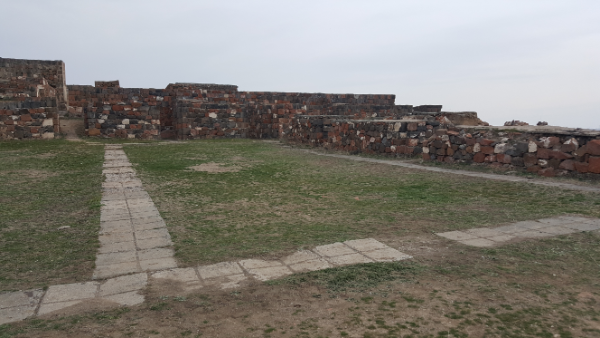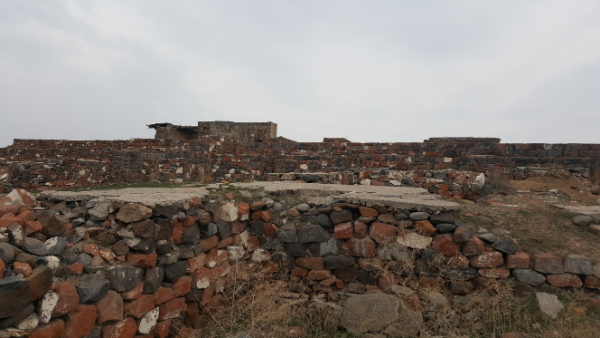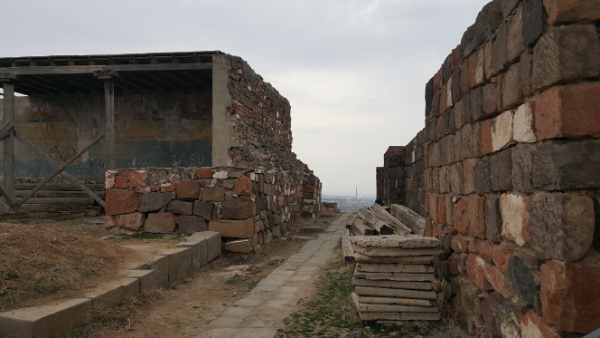I’ve been aggressively tackling my Armenia bucket list over the last few weeks, and this past weekend’s item was visiting Erebuni Fortress. The way I’ve been making my bucket list, especially around Yerevan, is this: I go to google maps. I click on random things on the map that look like they may be interesting. If it looks like anyone has ever been there and liked it, I add it to the list. That means that, besides the mainstream sights, I really have no idea what to expect from things because I don’t actually know other people who have been to them.
Erebuni Fortress was one of those mysteries. I found it while browsing maps and was like, “Oh yeah! This is where the city of Yerevan started!” and I added it to my list. I don’t know anyone else who has been there, besides one old volunteer friend who I found out actually volunteered there… but clearly, it meant nothing to me when she told me that the first time, and I immediately forgot. I suckered Olivia into coming with me, and the plans were set!
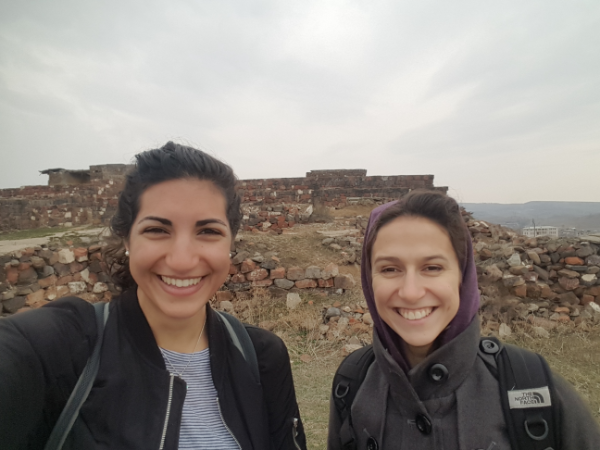
Erebuni Fortress, also called Arin Berd, is on top of a hill in the southern part of modern-day Yerevan. It was built in 782 BC by King Argishti I and was part of the kingdom of Urartu. It was one of a series of fortresses built along the kingdom’s northern border and became an important political, cultural, and economic center. The name “Erebuni” is thought to mean “capture” or “victory” (but maybe not because there are like 50 other guesses to what it might mean). If you visit the site, the location they selected makes perfect sense. The hill seems to come out of nowhere. Surrounded by flatness, it’s a random mountain, rising up 65 meters (about 215 feet).
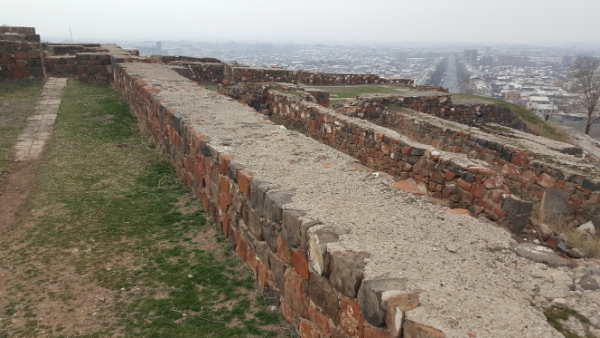
A town was constructed at the base of the mountain, and the fortress had a view of the town, the surrounding settlements, and all roads leading to the fortress. They think that the walls used to be 12 meters high! And if that wasn’t enough defense, there were three layers of walls. And they tied in with the slopes of the mountain, making access seemingly impossible. The fortress had a triangular plan and included a main courtyard, temples to Haldi (the supreme Urartian god) and Ivarsha (some other god), the palace, grain storehouses, and guards’ and servants’ quarters.
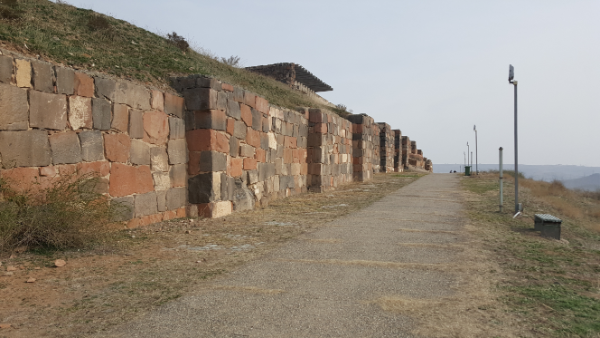
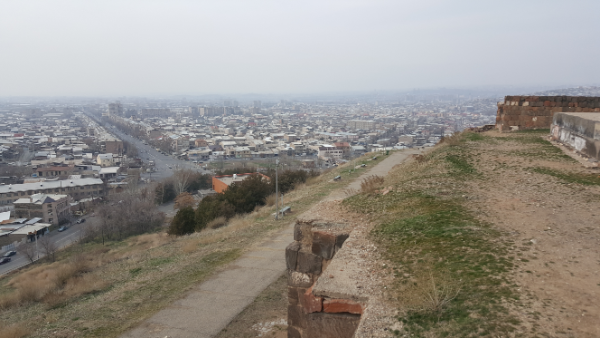
The existence of the fortress was forgotten until excavations in 1950 rediscovered it and revealed inscriptions crediting King Argishti with the construction. They also found the citadel walls, pipes for running water, frescoes, statues, ornaments, weapons, and over 20 cuneiform inscriptions. The water pipes were one of the craziest things because they’re made out of stone, and one of the signs in the museum said the water was piped in from GARNI. That’s like a 40-minute drive from Yerevan which doesn’t sound like much, but it is when you’re CARVING STONE PIPES to span the distance. Crazy.
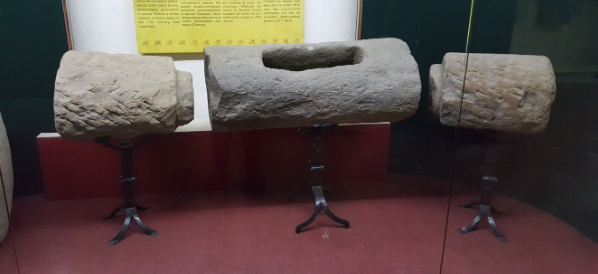

There are also some awesome mural paintings on the walls of the palace and temple. It’s amazing to think about the fact that those paints have survived for almost 3000 years! Mostly, the paintings are just patterns, but some of them also show scenes of the gods.
In celebration of Yerevan’s 2750th birthday in 1968, the fortress was partially restored, and a museum was built on the grounds to display some of the artifacts found during the excavations.
We visited the museum first, and it was kind of underwhelming. I’d still do it again though because it was only 1000 dram (about $2) for admission to the museum and the ruins, so it’s not like I felt gypped. We also didn’t get a guide which maybe would have been a good idea. Eh, it was still interesting enough, and they had some cool stuff in there like the stone water pipes. I think part of the problem was that it was kind of dark and the font on the signs was small, so I just felt like I should be falling asleep.
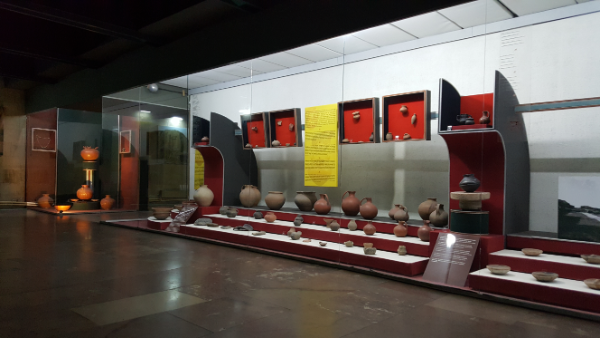
They had a reconstructed model of the site, and when we looked at it and noticed the painted walls, we thought that the modeler had just taken some artistic liberties. When we walked up to the fortress and saw painted walls in the very first building, we were VERY excited and also made mental apologies to the modeler for doubting him/her. To get to the ruins from the museum, you have to walk up a LOT of stairs. Olivia and I pretended to stop periodically to “check out the view”, but we were both just pretending that we weren’t getting winded. I used the excuse that since we were walking up a mountain, the air was thinning out so it had nothing to do with our physical shape and everything to do with the lack of oxygen in the air.
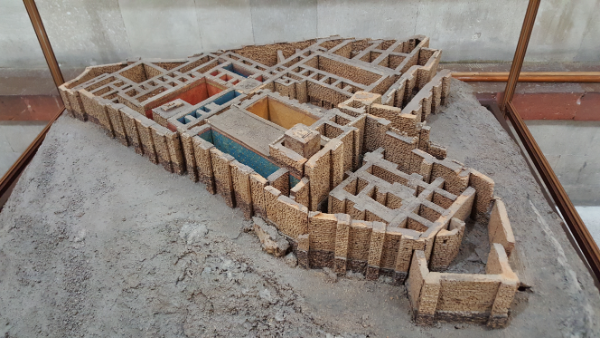
To be fair, the view was pretty great. If we had gone on a clearer day, it would have been spectacular. It’s without a doubt the best view of Ararat in the city, and you can see Yerevan stretching out in every direction around you. I always forget what a sprawling city it is because I live near the center, and if I don’t have a specific reason to go into the outskirts (such as a random sightseeing excursion), I never do.

I don’t know what I expected from the ruins, but I think I imagined them smaller and in worse condition. They are not small, and it looks like they did a decent amount of work rebuilding things. The walls are only maybe three meters high, and I can’t even imagine how imposing it must have looked when they were 12 meters. We entered through the original entrance to the fortress on the southeastern side, walking past the famous cuneiform stone about King Argishti coming to this place where there used to be nothing but desert and accomplishing great works upon it… or something to that effect. Very modest guy, that King Argishti.
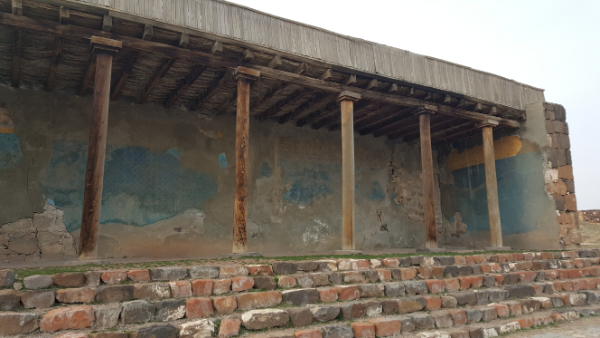
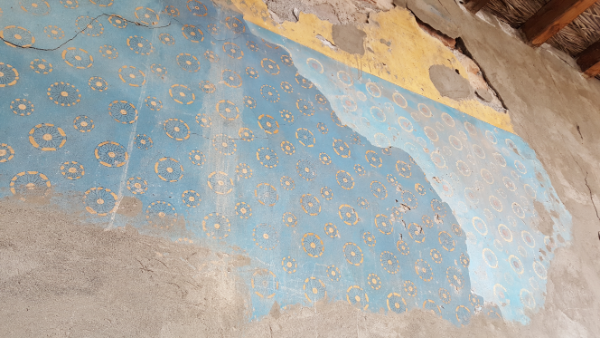
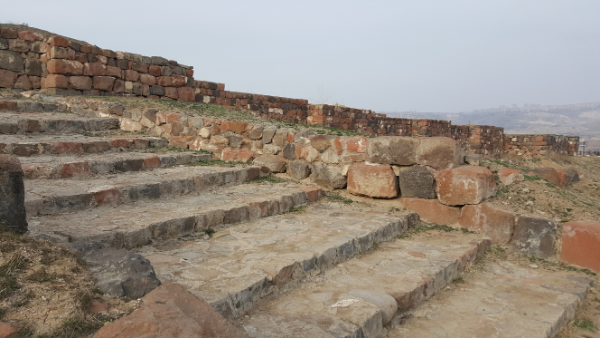
We wandered around the ruins for a bit and marveled at how extensive they were. We also both ranted about how no one respects history and “kids these days” because a bunch of the murals had names and other jibberish carved into them. Like come on… do you really have to do that? No one cares about your declaration of love or the fact that you “wuz here” (I don’t know if that was actually written anywhere, but probably). Why can’t people just go somewhere, admire it, and then NOT deface it? I know, crazy talk. Sorry for even suggesting it.

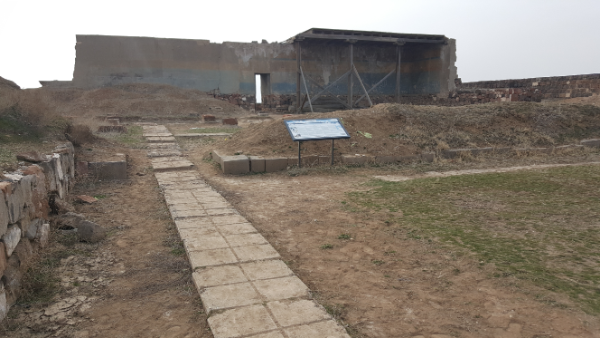
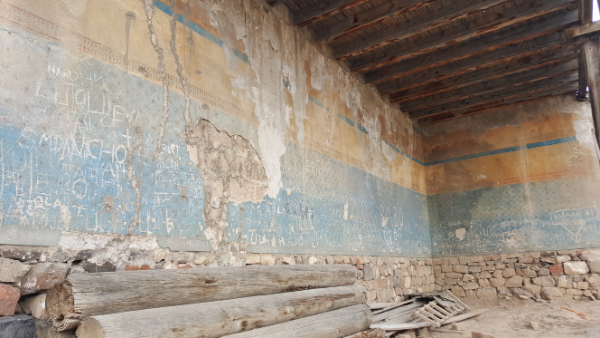
If we had explored the entire fortress, we could have spent hours and hours there. Instead, we explored a decent amount of it and then decided we were hungry and went to get dinner. I think we were still there for a considerable amount of time though because I ate before we went and was famished by the time we left (we’re apparently going to reference my stomach clock instead of actual times… mostly because I don’t remember those).
Anyway, all I can say about the general experience is thank you, google map browsing, for preventing me from missing out on a Yerevan not-so-hidden-but-definitely-underrated gem. Why on earth don’t more people go there???
